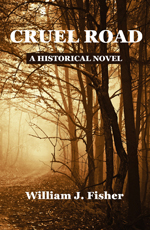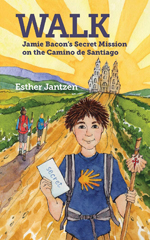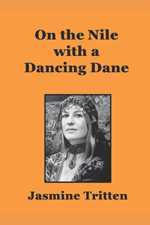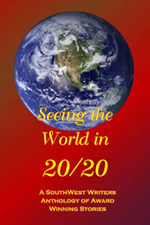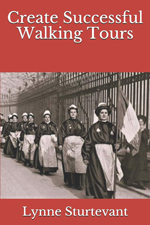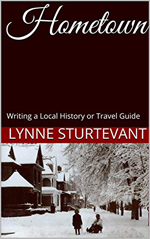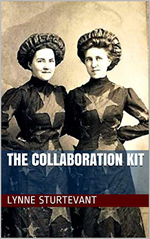Joseph Badal, Sarah H. Baker, Neill McKee, Jodi Lea Stewart, and several authors in the Corrales Writing Group represent the diverse membership of SouthWest Writers (SWW) with new 2020 books published in a variety of genres. The releases in this post couldn’t fit into this year’s interview schedule, but look for interviews or updates for most of these authors in 2021.
At the end of this post, you’ll find a list of interviewed SWW authors for books published in 2020.
 Joseph Badal’s 2020 release, Payback (Suspense Publishing), is his newest standalone novel. When Bruno Pedace learns that his investment banking partners are setting him up to take the fall for their own corrupt practices, he does what he has always done — run away. But the documents he takes with him put a target on his back. He changes his name and, for nine years, goes underground, until an assassin tracks him down in California and badly injures him. Befriended by Janet Jenkins, a courageous woman who works in a battered women’s shelter, Bruno, for the first time in his life, with Janet’s help, fights back. He constructs an ingenious financial scheme to get payback for the crimes perpetrated by his former partners.
Joseph Badal’s 2020 release, Payback (Suspense Publishing), is his newest standalone novel. When Bruno Pedace learns that his investment banking partners are setting him up to take the fall for their own corrupt practices, he does what he has always done — run away. But the documents he takes with him put a target on his back. He changes his name and, for nine years, goes underground, until an assassin tracks him down in California and badly injures him. Befriended by Janet Jenkins, a courageous woman who works in a battered women’s shelter, Bruno, for the first time in his life, with Janet’s help, fights back. He constructs an ingenious financial scheme to get payback for the crimes perpetrated by his former partners.
Visit Joe’s website at JosephBadalBooks.com and his Amazon author page.
 After publishing more than 20 novels, Sarah H. Baker has released the first in a speculative fiction series, Promise Me Tomorrow: Book 1: The Prisoner (August 2020). More than three generations after the collapse of civilization and decades of Utopian peace, New Village is suddenly attacked. Villagers are killed and precious supplies are stolen, but one of the injured bandits is left behind. Kole, Protector of New Village, can’t turn her out; she won’t survive. If he allows her to stay, will he be able to keep his children and the other villagers safe? All her life, Shylah has fought for everything: scratch, cover, her very life. But in this strange place, marks work together, and they even take care of their mutts. Won’t Bryce be pleased when he comes back to get her? Now she knows their secrets. They won’t survive a day.
After publishing more than 20 novels, Sarah H. Baker has released the first in a speculative fiction series, Promise Me Tomorrow: Book 1: The Prisoner (August 2020). More than three generations after the collapse of civilization and decades of Utopian peace, New Village is suddenly attacked. Villagers are killed and precious supplies are stolen, but one of the injured bandits is left behind. Kole, Protector of New Village, can’t turn her out; she won’t survive. If he allows her to stay, will he be able to keep his children and the other villagers safe? All her life, Shylah has fought for everything: scratch, cover, her very life. But in this strange place, marks work together, and they even take care of their mutts. Won’t Bryce be pleased when he comes back to get her? Now she knows their secrets. They won’t survive a day.
Visit Sarah’s website at SarahHanberryBaker.com. Promise Me Tomorrow can be found on Amazon.
 In Guns and Gods in My Genes (December 2020), Neill McKee takes the reader through 400 years and 15,000 miles of an on-the-road adventure, discovering stories of his Scots-Irish ancestors in Canada and a trail that heads south and west into the United States. Much to his surprise, McKee finds his American ancestors were involved in every major conflict on North American soil: the Civil War, the American Revolution, and the French and Indian War. In the last chapters, he reveals his Pilgrim ancestors who arrived on the Mayflower, landing at Plymouth in 1620, and their Puritan descendants who fought in the early Indian Wars of New England. With the help of professional genealogical research, he tracks down and tells the stories of the heroes, villains, rascals, as well as, the godly and ordinary folk in his genes, discovering many facts and exposing myths.
In Guns and Gods in My Genes (December 2020), Neill McKee takes the reader through 400 years and 15,000 miles of an on-the-road adventure, discovering stories of his Scots-Irish ancestors in Canada and a trail that heads south and west into the United States. Much to his surprise, McKee finds his American ancestors were involved in every major conflict on North American soil: the Civil War, the American Revolution, and the French and Indian War. In the last chapters, he reveals his Pilgrim ancestors who arrived on the Mayflower, landing at Plymouth in 1620, and their Puritan descendants who fought in the early Indian Wars of New England. With the help of professional genealogical research, he tracks down and tells the stories of the heroes, villains, rascals, as well as, the godly and ordinary folk in his genes, discovering many facts and exposing myths.
Guns and Gods in My Genes can be ordered from Albuquerque bookstores (such as Organic Books and Bookworks), as well as from Neill’s website at NeillMckeeAuthor.com and Amazon.
 Jodi Lea Stewart published her sixth book, TRIUMPH: a Novel of the Human Spirit, in September 2020. 1903: Deep in the Louisiana swamps, five-year-old Willy is kidnapped by a Vodou Priestess. One day, he will fight bloody battles in France and come face-to-face with the horrors of Vodou. In bustling New Orleans, bachelor Jack — a former Texas Ranger — has an encounter with a young beauty hiding in his hotel room. What she wants and needs will change his life forever. 1958: St. Louis, two girls of different races, Mercy and Annie, meet in the fifth grade. Together, they secretly explore St. Louis via bus and streetcar, encountering cultural prejudices at every turn — including from within one girl’s own family. The turbulent times and the Civil Rights Movement will test the girls’ loyalty and affect their choices on the way to adulthood. In a saga spanning from 1903 to 1968, compelling characters navigate the stormy paths of life in New Orleans, St. Louis, and Texas until they all collide in a startling and dramatic way.
Jodi Lea Stewart published her sixth book, TRIUMPH: a Novel of the Human Spirit, in September 2020. 1903: Deep in the Louisiana swamps, five-year-old Willy is kidnapped by a Vodou Priestess. One day, he will fight bloody battles in France and come face-to-face with the horrors of Vodou. In bustling New Orleans, bachelor Jack — a former Texas Ranger — has an encounter with a young beauty hiding in his hotel room. What she wants and needs will change his life forever. 1958: St. Louis, two girls of different races, Mercy and Annie, meet in the fifth grade. Together, they secretly explore St. Louis via bus and streetcar, encountering cultural prejudices at every turn — including from within one girl’s own family. The turbulent times and the Civil Rights Movement will test the girls’ loyalty and affect their choices on the way to adulthood. In a saga spanning from 1903 to 1968, compelling characters navigate the stormy paths of life in New Orleans, St. Louis, and Texas until they all collide in a startling and dramatic way.
Visit Jodi’s Amazon author page.
 Kale is a Four Letter Word (Artemesia Publishing, September 2020) is the sixth anthology published by the Corrales Writing Group (members Chris Allen, Maureen Cooke, Sandi Hoover, James John Tritten, and Patricia Walkow). Kale has invaded our culture as the go-to food for healthy living, appearing everywhere on restaurant menus, in grocery stores, and in beauty products like soaps and scrubs. For some, the vitamin load and beneficial fiber cannot outweigh the bitterness and texture of this member of the cabbage family. For those people, kale has ignited a passionate response, often reflected in internet memes and T-shirt slogans. This collection of short stories shows kale in a new light. A couple of tales are horror stories about kale’s effect on a life; another one describes a speculative history of kale; one is a murder mystery where kale plays an unusual role; and one is a fantasy about kale’s rivalry with cauliflower. This book also features delicious kale recipes.
Kale is a Four Letter Word (Artemesia Publishing, September 2020) is the sixth anthology published by the Corrales Writing Group (members Chris Allen, Maureen Cooke, Sandi Hoover, James John Tritten, and Patricia Walkow). Kale has invaded our culture as the go-to food for healthy living, appearing everywhere on restaurant menus, in grocery stores, and in beauty products like soaps and scrubs. For some, the vitamin load and beneficial fiber cannot outweigh the bitterness and texture of this member of the cabbage family. For those people, kale has ignited a passionate response, often reflected in internet memes and T-shirt slogans. This collection of short stories shows kale in a new light. A couple of tales are horror stories about kale’s effect on a life; another one describes a speculative history of kale; one is a murder mystery where kale plays an unusual role; and one is a fantasy about kale’s rivalry with cauliflower. This book also features delicious kale recipes.
Visit Corrales Writing Group’s Amazon author page.
SWW Author Interviews: 2020 Releases
Connie Flores
• Our Fascinating Life: The Totally Accidental Trip 1979
Sue Houser
• Wilmettie
BR Kingsolver
• Knights Magica
Dr. Barbara Koltuska-Haskin
• How My Brain Works: A Guide to Understanding It Better and Keeping It Healthy
Manfred Leuthard
• Broken Arrow: A Nuke Goes Missing
Shirley Raye Redmond
• Courageous World Changers: 50 True Stories of Daring Women of God
J.R. Seeger
• A Graveyard for Spies
Lynne Sturtevant
• Hometown: Writing a Local History or Travel Guide and The Collaboration Kit
Patricia Walkow
• New Mexico Remembers 9/11
 KL Wagoner (writing as Cate Macabe) is the author of This New Mountain: a memoir of AJ Jackson, private investigator, repossessor, and grandmother. Kathy posts to a speculative fiction blog at klwagoner.com and writes about memoir at ThisNewMountain.com.
KL Wagoner (writing as Cate Macabe) is the author of This New Mountain: a memoir of AJ Jackson, private investigator, repossessor, and grandmother. Kathy posts to a speculative fiction blog at klwagoner.com and writes about memoir at ThisNewMountain.com.

